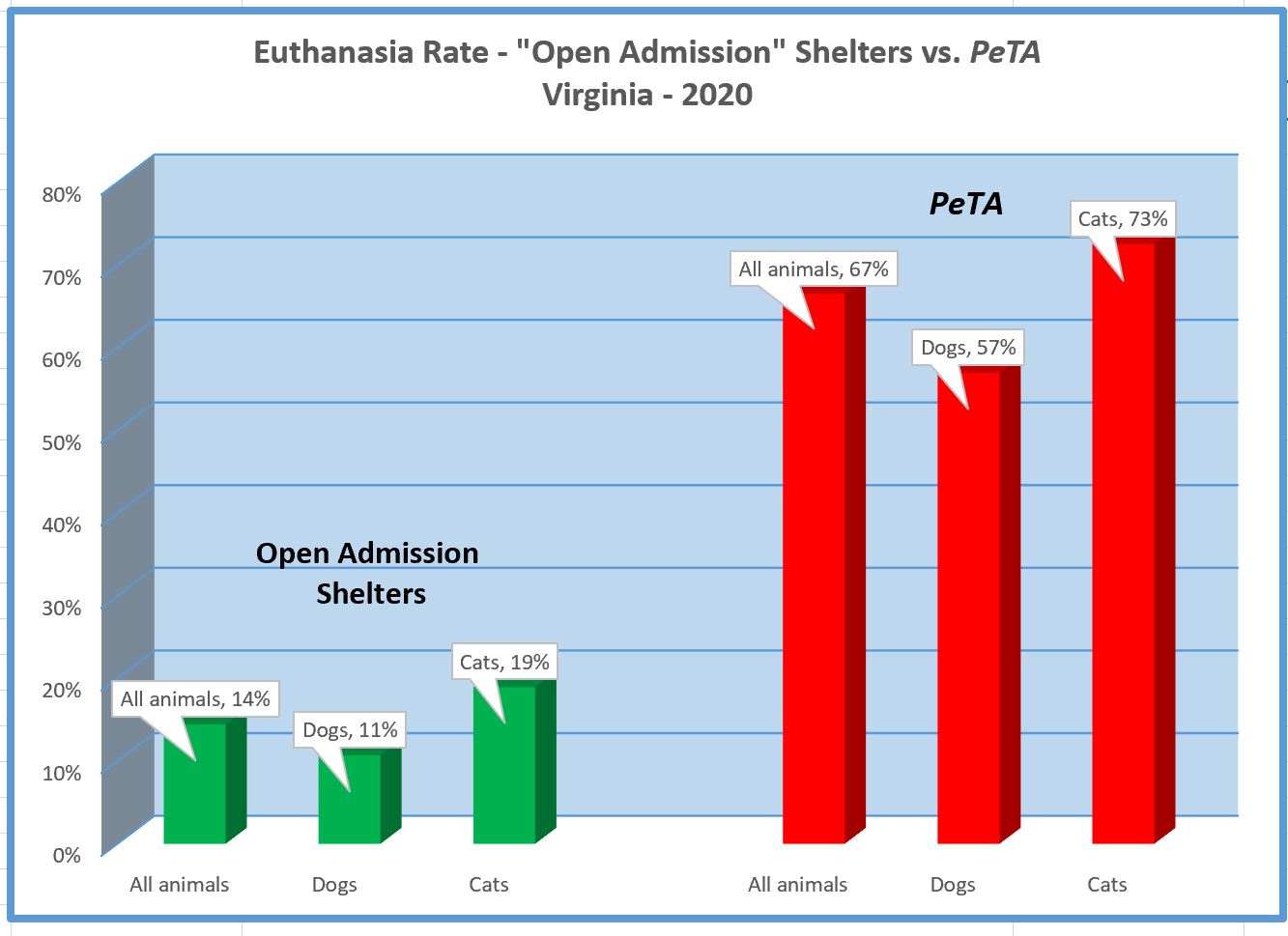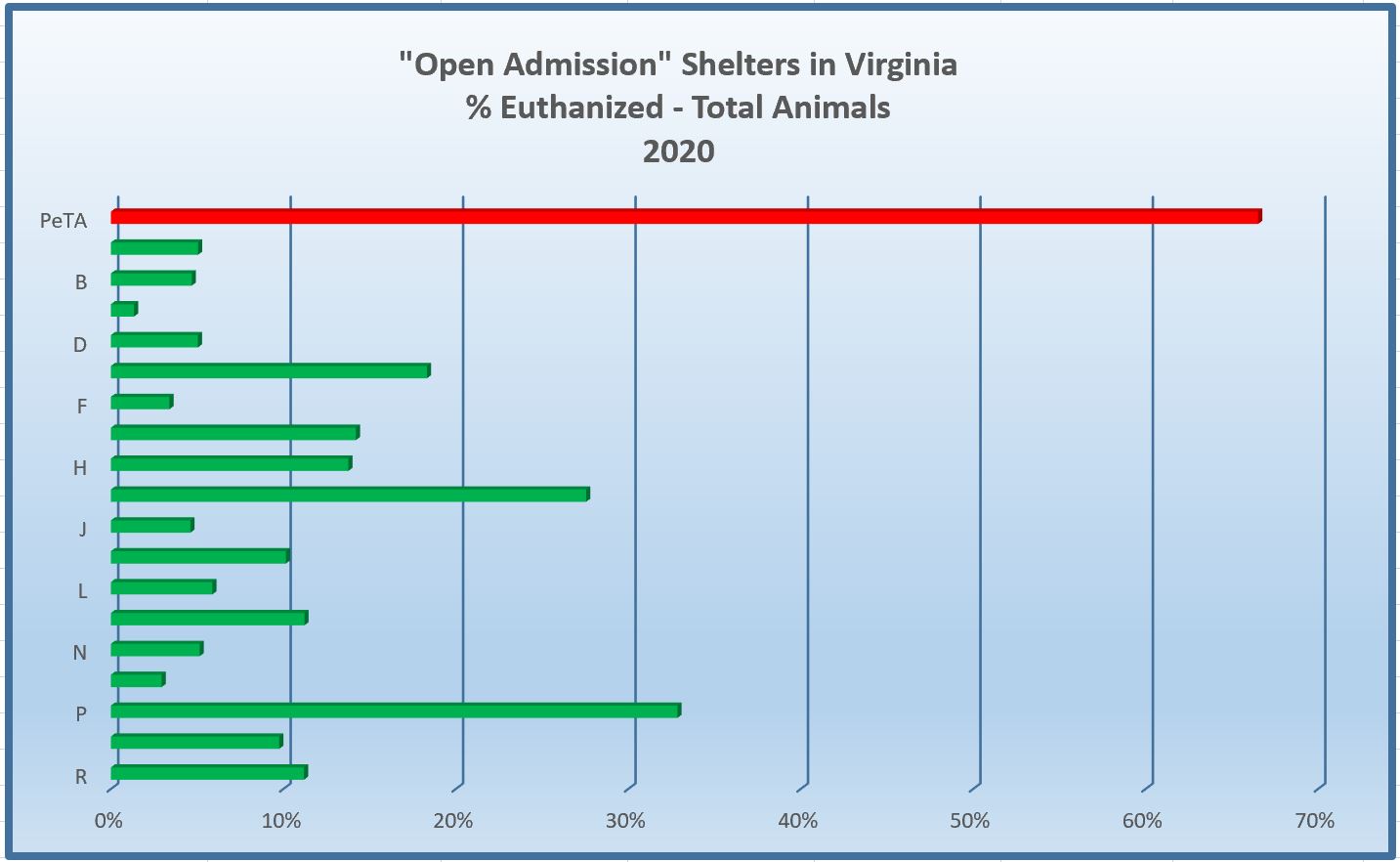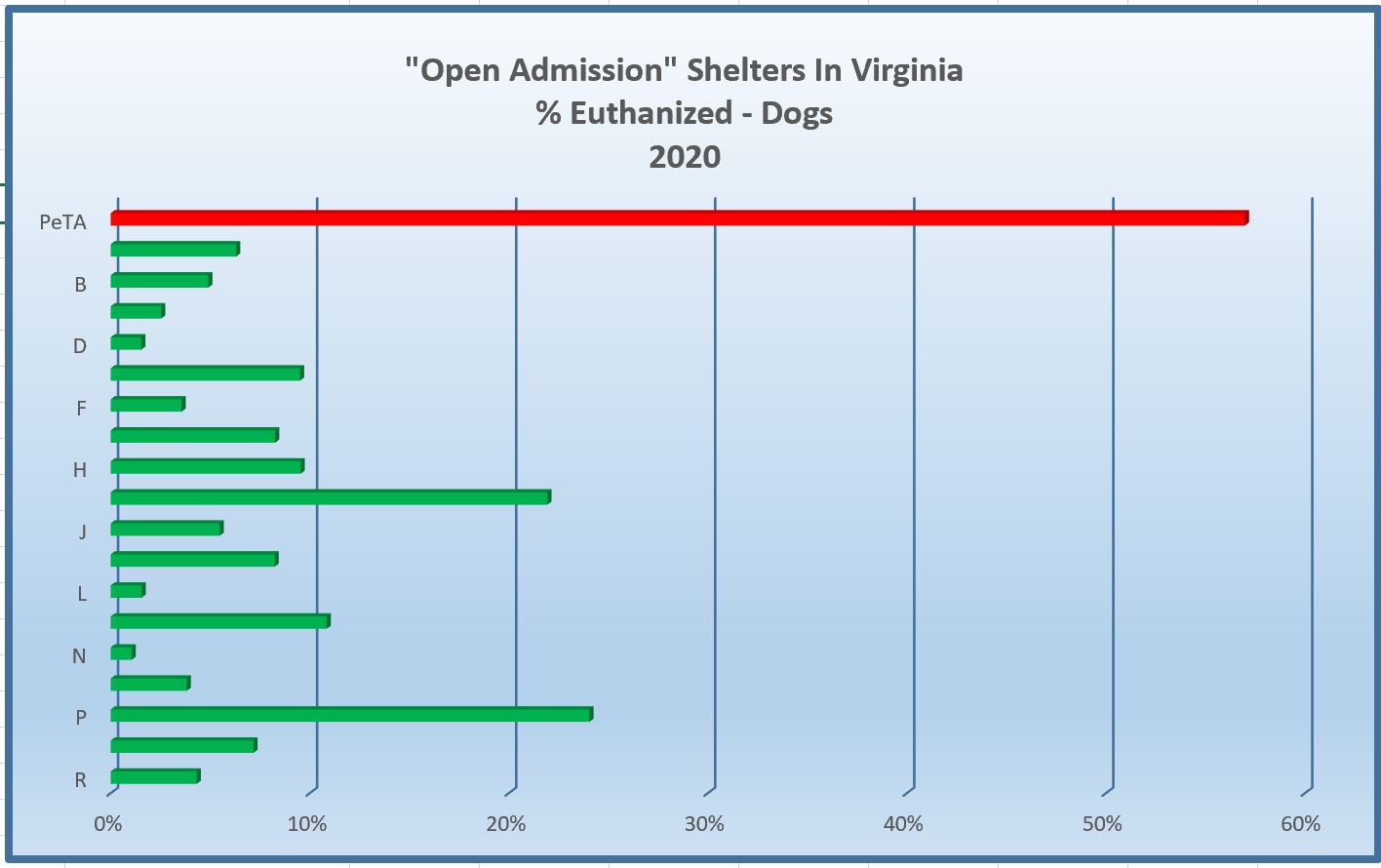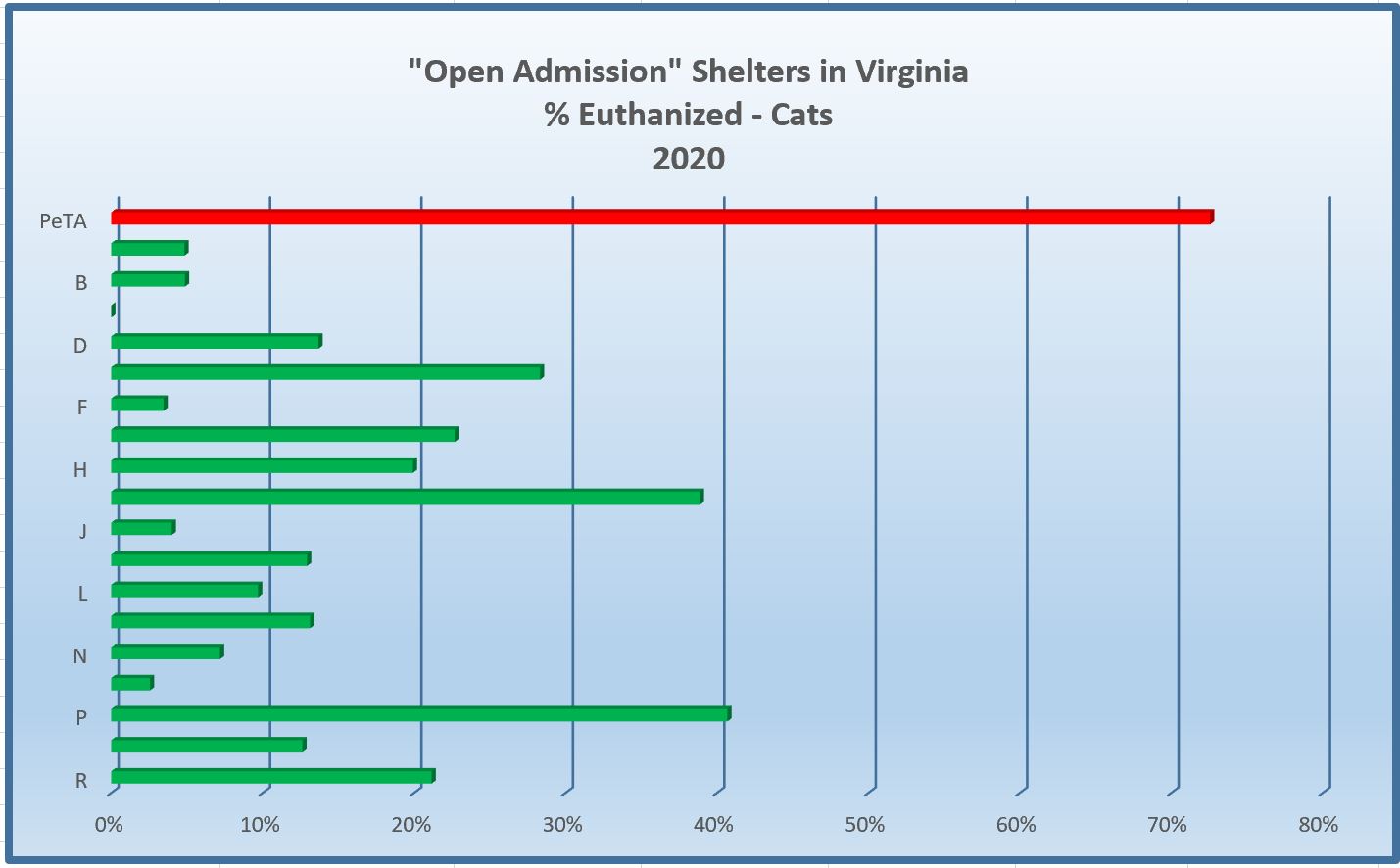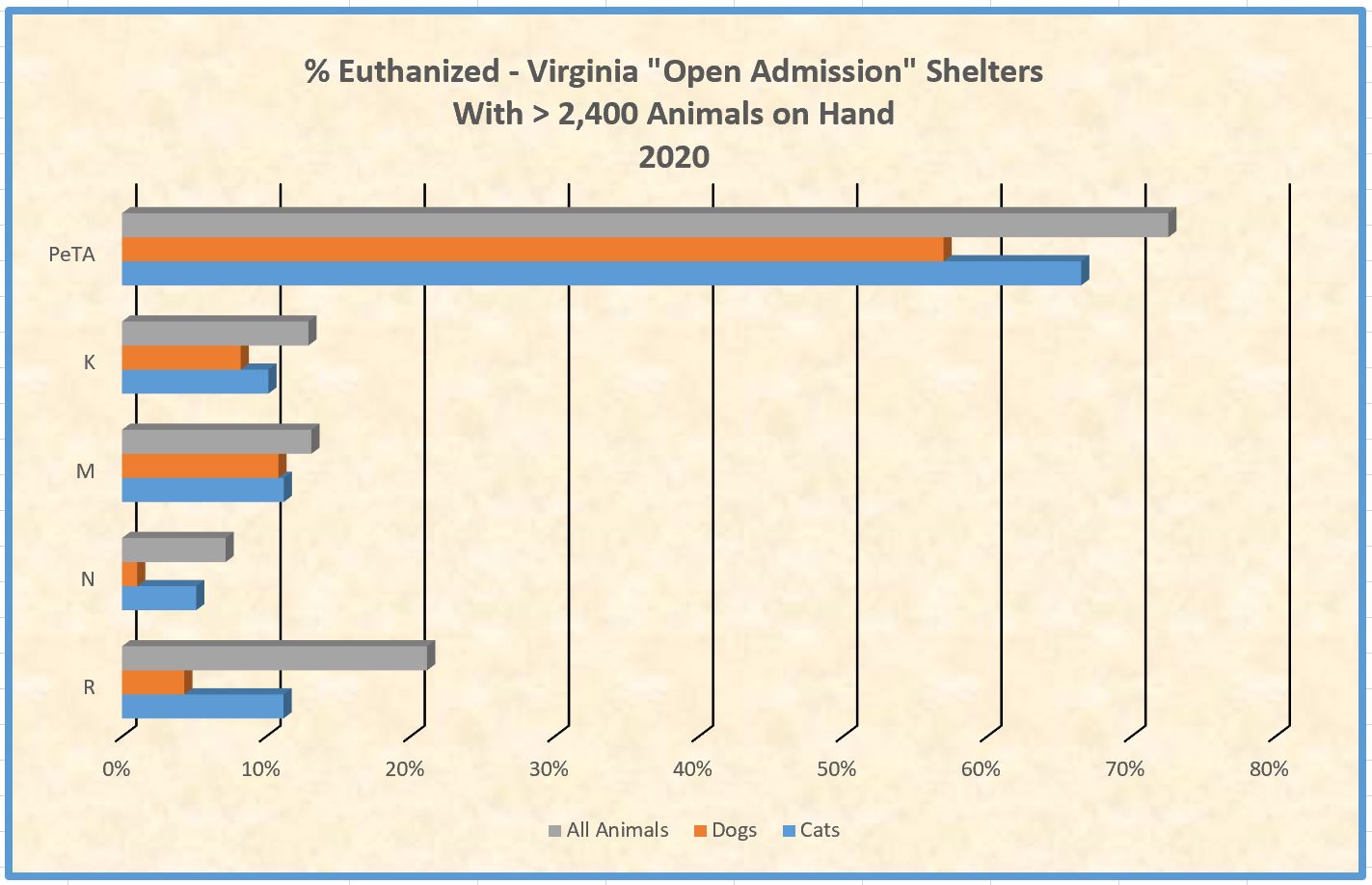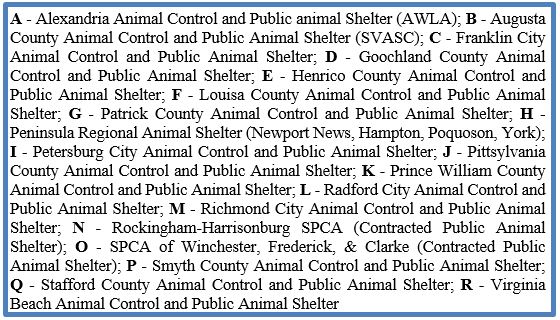Last week, we wrote on the overall euthasia rate in 2020 for the animal “shelter” that animal rights organization People for the Ethical Treatment of Animals (PeTA) runs in Norfolk, Virginia. (“Euthanasia rate” here means how many animals the shelter euthanized (killed) expressed as percentage of how many animals the shelter took in during 2020. It is based on data that every animal shelter in Virginia is required to submit annually to the Virginia Department of Agriculture and Consumer Services (VDACS).) PeTA’s euthanasia rate was far higher than the average euthanasia rate for other shelters in Virginia. When compared to the overall euthanasia rate of all reporting agencies in Virginia in 2020, as reported by VDACS, PeTA’s rate was more than 11 times higher for dogs, more than 7 times higher for cats and more than 9 times higher for dogs and cats combined.
This week, we dig a little deeper into the numbers.
PeTA often defends its high euthanasia rate on the ground that it is an “open admission” shelter. PeTA’s intake policy, which was included with its 2020 annual VDACS filing, states: “PETA’s Animal Shelter and Community Animal Project practice a true open admission policy. We never turn animals away regardless of their age, history, breed, physical condition, or temperament.” So, runs the argument, because PeTA takes in animals that are hopelessly ill or unadoptable, PeTA’s euthanasia rate necessarily is higher than more selective shelters. The problem with this argument is that the numbers do not support it.
There are at least eighteen other shelters in Virginia with intake policies that describe themselves as “open admission.” (See endnote below). As the graph below shows (based on data reported by VDACS), the average euthanasia rate for these other “open admission” shelters, as a group, for dogs, cats and all animals was far less than PeTA’s euthanasia rate:
Even when the euthanasia rates for these other “open admission” shelters are compared with PeTA’s on an individual basis, PeTA’s rate is still far higher. The next three graphs (based on data reported by VDACS for 2020) compare the individual euthanasia rates of the other “open admission” shelters with PeTA’s for all animals combined as well as for dogs and cats separately:
Nor can PeTA defend its own euthanasia rate on the ground that it is overwhelmed with animals. While PeTA did take in 2,650 animals during 2020, VDACS data show that four other “open admission” shelters also took in comparable numbers of animals during 2020 — 2,650, 2,459, 2,622 and 4,526. Yet, those four “open admission” shelters had euthanization rates (for all animals, cats and dogs) that were dramatically lower than PeTA’s:
Why is it that these “open admission” animal shelters (one of which is actually in the vicinity of PeTA’s “shelter”), took in as many, if not significantly more, animals in 2020 but euthanized only a fraction of the animals that PeTA euthanized? PeTA needs to answer that question.
________________________________________
Endnote. Shelters in Virginia (other than PeTA) describing themselves as “open admission” in the intake policies in their 2020 annual reports on file with VDACS:

